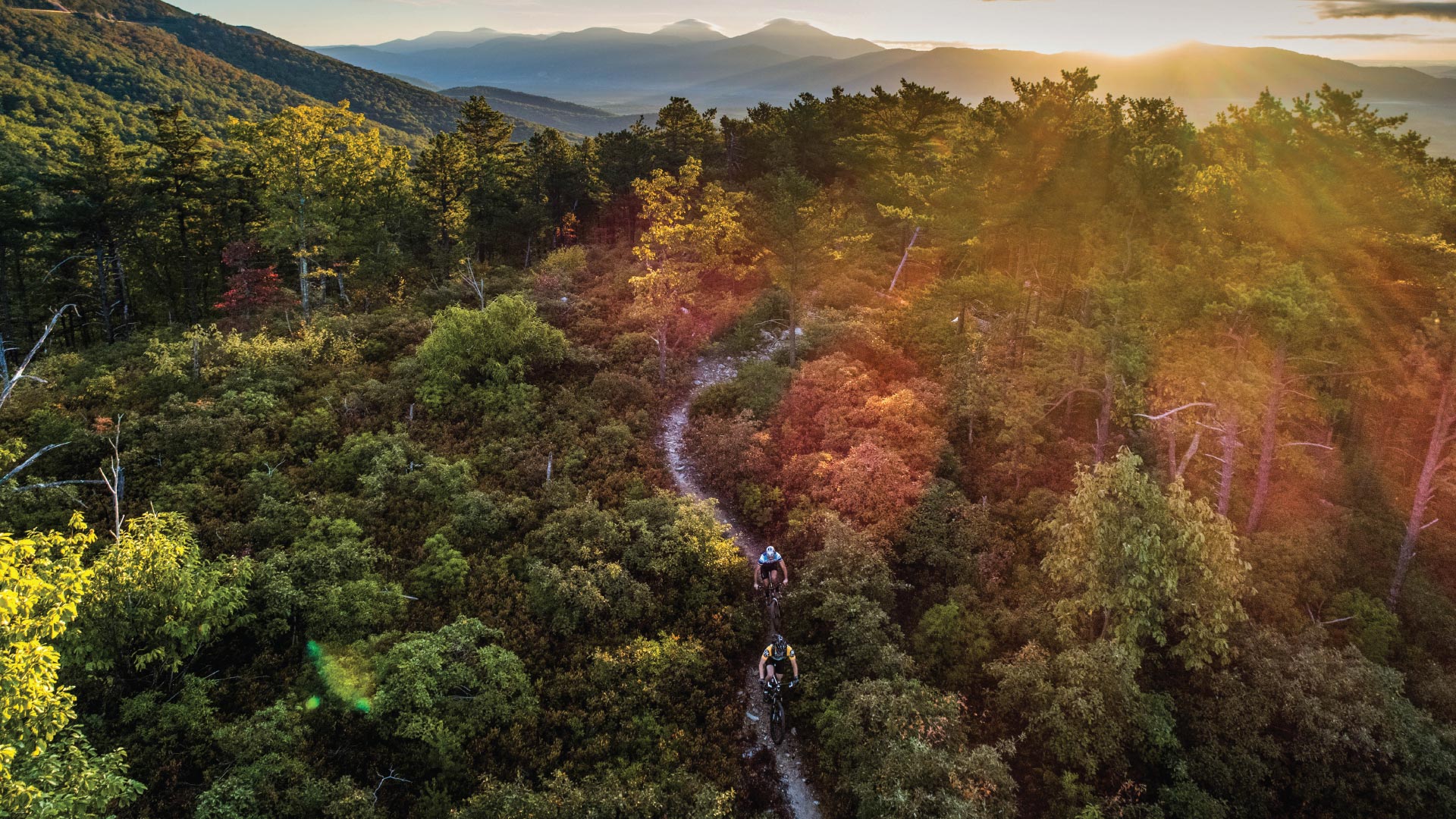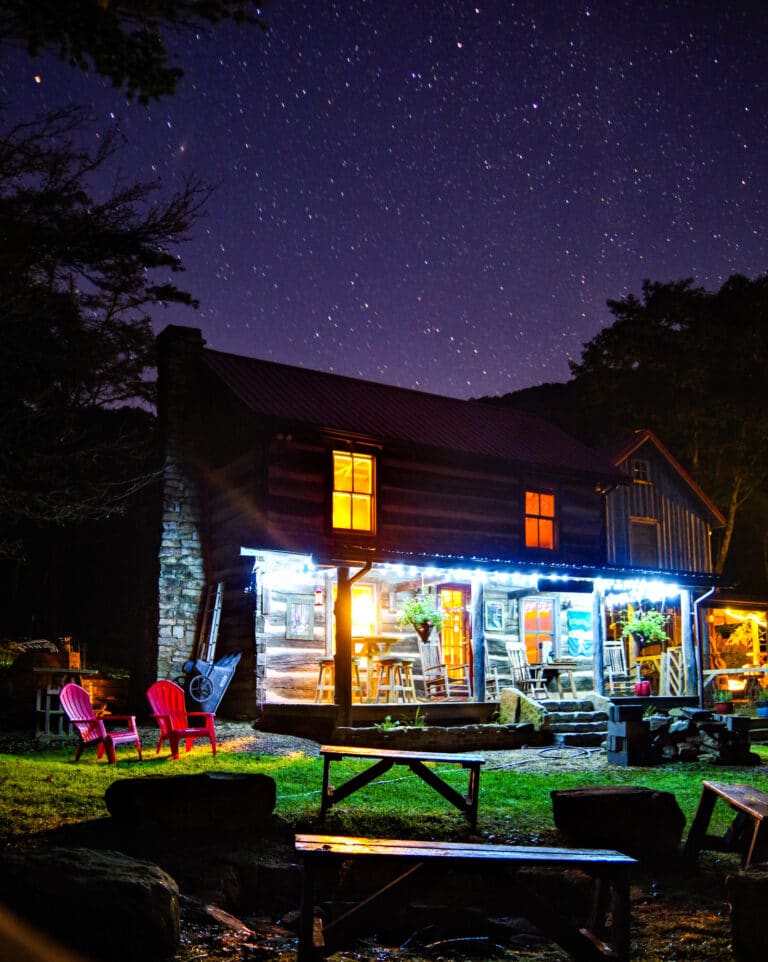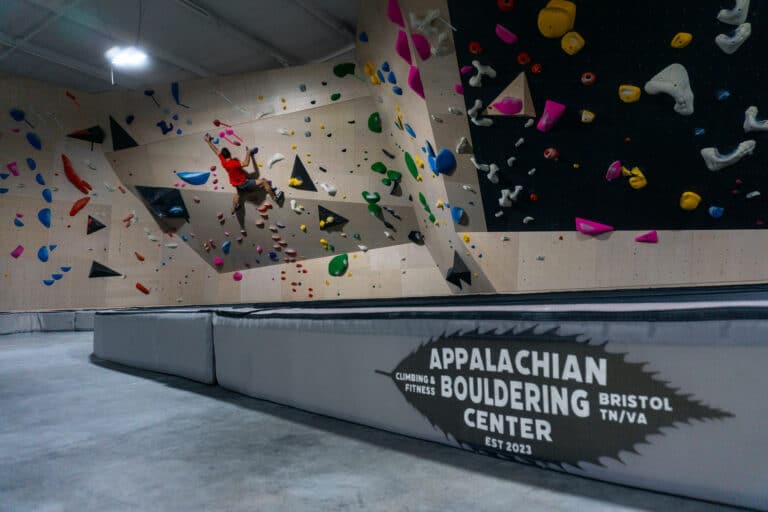There’s a revolution taking place in the world of mountain biking.
Moab and British Columbia’s North Shore are no longer the centers of the bike universe. Trail towns are popping up all over the country, in some pretty unlikely places. Destinations you’ve never heard of, like Anniston, Alabama, are increasingly appearing on bikers’ radars. Locally minded pro riders, move-n-shake community leaders, and innovative trailbuilders are transforming long-ignored backwaters into knobby-tire hubs.
With so many new places to shred, The International Mountain Biking Association (IMBA) wants to remake the map. Throughout the winter of 2018 they fine-tuned their grading scale hoping to better assess the world’s best mountain bike towns, also known as ride centers. IMBA rates, or demotes, a ride center based on seven factors: trail experiences, services, community involvement, tourism, promotion, marketing, evaluation, and measurement. Using these criteria, IMBA decides if your town is gold, bronze, silver, or nothing at all. Currently there is not a single gold-level town in Appalachia.
“IMBA has that currency, the ability to accredit trail systems,” says Southeastern Off-Road Mountain Biking Association (SORBA) Director Tom Sauret. “A lot of communities like that. It’s a high honor especially to those who might feel a little insecure about what they have to have offer, places like Augusta, Georgia.”
Upon receiving a ride center application, an IMBA team descends upon your town. Guys like Anthony Duncan, an IMBA project manager from Tennessee, spend a few days ripping your trails, talking with your leadership, and rating your amenities. Duncan looks for diverse riding options, sustainability, well-marked trails, an engaged community, a good place to chow, and a comfortable spot to lay his head after a long day of riding. If your town offers this kind experience, then you’re looking at ride center status.
The most common problems, he says, are a lack of easy trails for families and poor signage.
“IMBA, like trailbuilders, sees the big picture,” says Pisgah Stage Race founder and Long Cane Trails owner Todd Branham. “Ride centers—when I travel that’s what I use. Those are the hotspots.”
Ultimately, says IMBA, the idea is to improve the sport.
“The real goal, our mission, is to make places better for mountain biking,” says IMBA project manager Shane Wilson. “The ride center concept leads destinations through a process of looking at themselves. This is something for communities that are really looking to improve. It can put them on the map.”
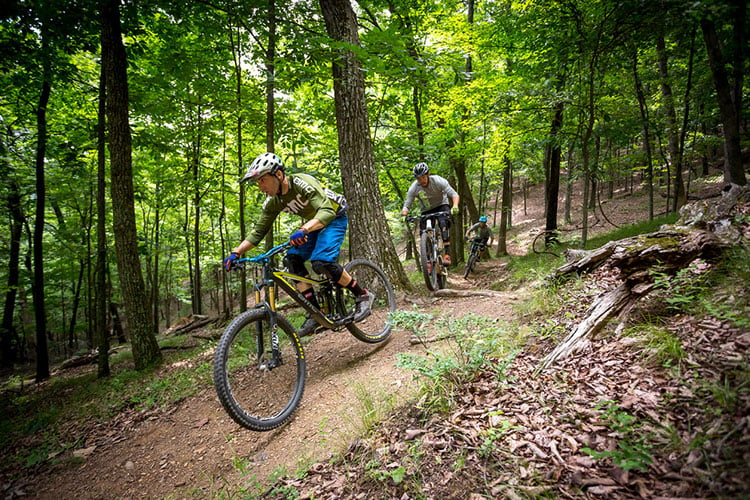
SILVER
Roanoke, Virginia
“Roanoke has everything we want and more,” says three-time USA Cycling mountain biking national champ Gordon Wadsworth. “Mountain biking, river access, ample jobs, an old part of town, a market.”
Even with all its amenities, it’s still the trails that convinced Wadsworth to make downtown Roanoke his home and training ground.
“The thing that has kept us here is the accessibility,” says Wadsworth. “From my home I can be on singletrack in ten minutes by bike. 100 miles of singletrack from my door is hard to beat.”
Kristine McCormick, the President of Roanoke IMBA, is proud to call this Virginia mountain town home.
An IMBA board member since 2012, she says local leaders have made a concerted effort to transform Roanoke into an outdoor recreation hub, specifically a mountain biking hub. Roanoke is currently the only silver-level ride center in the Blue Ridge Mountains.
“One of the things that had never been done before was all the land managers sat down together and did this inventory looking at the land as a whole,” McCormick says. “We formed some really good working relationships from that.”
IMBA’s Anthony Duncan vouches for the work McCormick put in and the subsequent transformation that took place.
“Roanoke was interesting,” says Duncan. “It had a lot of support for outdoor recreation, but it lacked identity. McCormick utilized that outdoor leadership and support. They’re trademarking the brand of being the mountain biking capital of the east coast. The support coming out of Roanoke is unbelievable.”
Still, community leaders, stakeholders, and bikers are working at becoming a gold-level ride center.
“We are very excited,” McCormick says. “Moving forward, the community wants to continue investing in mountain biking.”
Meanwhile Roanoke riders are busy sessioning their smorgasbord of trails, places like Mills Mountain, Carvins Cove, or the 41-mile Blue Ridge Parkway Epic.
“It’s a good place to keep your battery charged,” says Wadsworth.
BRONZE
Coldwater Mountain
Anniston, Ala.
Anniston, Alabama is mountain biking’s dark horse. This once-struggling southern hamlet has embraced bicycling as the path forward.
“Anniston is a community redefining itself as an outdoor destination,” says Tom Sauret. “I have never been in a community that is so engaged with SORBA and IMBA to transform the thinking around biking.”
After building 35 miles of trail on Coldwater Mountain in just four years, the city has now purchased 65 adjoining acres for a parking lot, campground, and pump track. Meanwhile, the Fort McClellan development authority is investing $600,000 toward trail development, and the Northeast Alabama Bicycle Club is renovating a 108-year-old building to serve as the group’s headquarters.
“We have a lot of dedicated people in this town,” says club president Tom Nelson.
Anniston’s crown jewel remains Coldwater Mountain, which sits just two miles from the downtown.
At 900 feet of elevation, purpose-built trails run down both sides of the giant hill. Deciduous trees and loamy soil make up the north side, while the south side consists of fire ecosystem, pines and rock.
“People from big mountain states will come here and they’re pleasantly surprised by the length of the descents,” says Patrick “Wig” Wigley, owner of Wig’s Wheels, Anniston’s go-to bike shop. “It makes up for the lack of altitude. You’re paid off ten times on the descents. Most descents have a half-dozen to a dozen berms, and about 50 kickers. It’s machine-cut, with flowy terrain in mind.”
Bomb Dog Loop is an especially popular trail, fast with an assortment of lines. Nearby Gaza trail is brutally chunderous.
With a growing taste for trail, Anniston is continuing its efforts.
Nelson says biking has had a two-million-dollar impact on Anniston’s economy.
Local leaders are now focused on inspiring future advocates and trail connectivity. Fort McClellan will serve as a high school mountain bike course, as well as beginner-friendly trails. Anniston currently boasts three high school mountain biking teams.
The nearly completed Chief Liadaga rail trail, which passes through 33 miles of rolling Alabama farmland and recreation areas, will begin in Anniston.
“There are so many special things about this place,” says Wigley. “It’s hard to mention them all.”
Central Savannah River Area, Georgia + South Carolina
“We put that place on the map,” says trail builder and race promoter Todd Branham. “At the IMBA World Summit in 2010 people were blown away.”
The Central Savannah River Area (CSRA) boasts roughly 150 miles of trails zigzagging the South Carolina/Georgia border.
“It’s not real technical, it’s just fun,” says Branham.
Branham says the key in CSRA’s rise has been their SORBA chapter and the tireless work invested, especially in securing trail-building grants.
“That club is one of the strongest in the country,” says Branham. “They all got on board. They were ahead of the times.”
Drew Jordan, owner of Andy Jordan’s Bicycle Shop in Augusta, Georgia, agrees that the club’s work has been crucial in the area’s emergence as a mountain bike destination.
“We are very fortunate to have the club that we do,” says Jordan. “They put in an incredible amount of man hours, both on the trail and behind the scenes.”
Jordan reciprocates their hard work every year when he puts on his FATS Flowmaster.
Inspired by the speedy, buttery-smooth trails in the Forks Area Trail System (FATS), Jordan named his annual race after the area’s prized system. One hundred percent of race proceeds go back into CSRA’s SORBA chapter.
Jordan says rookie mountain bikers are routinely hooked after riding FATS.
“There’s no barrier to entry,” he says. “Almost anybody can come ride out here. Once somebody gets on those trails they are hooked.”
Brown Wave is a can’t-miss FATS loop and Great Wall, Jordan says, has a little bit of everything: jumps, berms, speed.
For a slightly more rugged adventure riders push into Modoc, Turkey Creek, and Wine Creek.
Nearby Augusta is replete with happening bars and restaurants like the Riverwatch Brewery.
Reading, Pennsylvania
Nestled at the bases of Neversink Mountain and Mount Penn, Reading’s rocky trails groomed one of the east coast’s premiere downhill mountain bikers.
YT racer Neko Mulally maintains that his childhood home is one of the best places to ride in all of the mid-Atlantic.
“There are a lot of trails close to the city,” Mulally says. “There’s good access, definitely a good mix. There’s a lot of lakes that have some good trails around them. Pennsylvania is rocky, so there is some technical stuff.”
While Neko has moved away, his brother Logan is still shredding Pennsylvania full-time and purveying the stoke as manager of a local bike shop World Wide Cyclery.
“It’s the type of riding I like,” Logan says. “It’s very technical. There’s not a ton of elevation, maybe just 600 feet, but there’s a lot of rocks. It makes the uphills even more fun. There’s a little bit of everything.”
What Reading lacks in elevation, it makes up for in accessibility and diversity. Over 70 miles of trails encircle a downtown with good watering holes and restaurants. Downhill runs like A-Line complement technical routes, such as the Never-Sink Loop, and the beginner-friendly Blue Marsh.
Furthermore an active local club is nourishing Reading’s reputation by building more trails, and local riders are known for their good, old-fashioned hospitality.
“Really friendly people,” says Logan. “There’s always somebody in the parking lot happy to show you trails.”
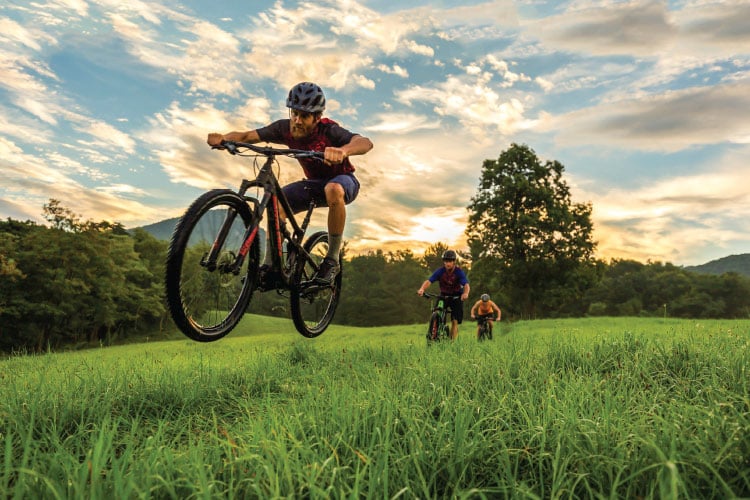
Harrisonburg, Virginia
“Harrisonburg has the best backcountry experiences of any ride center in the region,” says Duncan. “It’s progressive, forward-thinking trail building within the National Forest Service vision.”
Which is exactly why legendary endurance racer Jeremiah Bishop calls Harrisonburg home.
“It’s an incredible place to train because there is such a diversity of riding,” says Bishop. “The backcountry riding is one of the highlights.”
Aside from brutal grinders through George Washington National Forest and along the Virginia Mountain Trail, there’s beginner-friendly systems downtown at Hillandale and white-knuckle, gravity-riding at Bryce and Massanutten.
“It’s some of the best riding in the world, and I travel the world riding bikes,” says Bishop.
Furthermore, races, impassioned club members, and a revitalized downtown with bike shops, breweries, and a university make Harrisonburg a top-notch destination.
“It’s a good community,” says Bishop. “It’s got a lot going on: trail work parties, races, six-pack invitationals. It’s got a good vibe to it; a lot of people who give back to the sport. The culture is strong.”
Richmond, Virginia
A lack of terrain could not stop Richmond, Virginia, from building the fast-riding, texture trails that IMBA loves. Just 15 minutes outside of downtown in Pocahontas State Park, mountain bike enthusiasts have turned a relatively flat chunk of ground into hair-raising flow trails complete with big berms and even a dual slalom course.
“The solution was to source dirt,” says Duncan, “and basically build up the tread. It provided a completely different experience.”
Eddie Anderson, a pro cyclist for Hagensberman Axeon, grew up in Richmond. He says local trail advocates RVA MORE are largely responsible for this innovative approach. The group maintains more than 120 miles of trail within a short drive of the city.
“RVA MORE does community service days every week,” he says. “The trails are very well maintained.”
Anderson’s favorite trails are actually inside the city limits at James River Park where he says he can string together a 50-mile ride almost entirely on singletrack.
“You’d never think such an expansive trail network could exist in the heart of the city,” says Anderson. ”There are lots of new sections with big drops.”
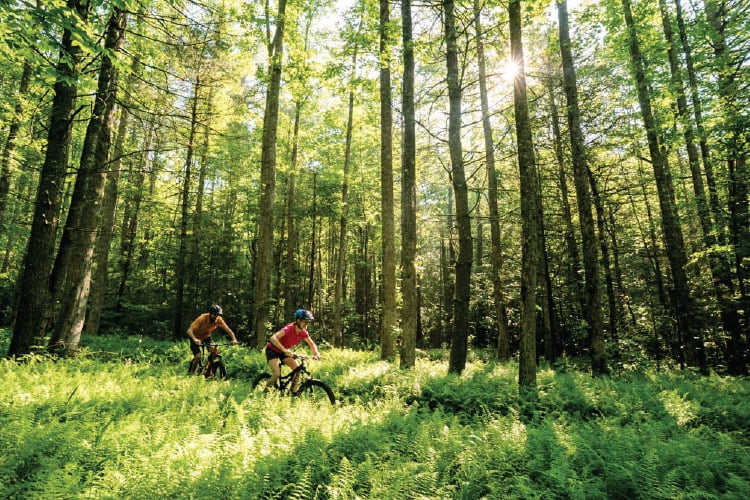
Going For Gold
The Blue Ridge Mountains are home to a host of towns that could be the East’s first gold-level ride center.
Brevard, North Carolina
“It’s sweet living here. There are so many good trails,” says professional downhill racer Walker Shaw. “I never feel like I’ve ridden all the trails. Dupont is smooth and rolling. Pisgah Forest is so massive. Bennett Gap is fast, rough, rooty, and rocky. Shaw, who rode for the national champion Brevard College Tornados, says the town is an idyllic mountain biking community. “I rarely had to drive to ride trail. I’d just hop on at Bracken Mountain, and I’ve met so many good people here.”
Chattanooga, Tennessee
In 2004 SORBA Chattanooga began their Singletrack Mind Initiative with just seven miles of trail. Today bikers can access 120 miles of singletrack without straying any further than ten miles from the downtown. Along with exemplary leadership, Chattanooga boasts a one-of-a-kind riding experience. With grueling climbs, wicked-fast descents, rock gardens, beginner-friendly paths, stunning views of the Tennessee River, and a hip downtown, the River City has it all. The trails at Raccoon Mountain are highly regarded by novices and experts alike.
Davis, West Virginia
“Davis is small town. There’s not many places with a population of 600 people that have such access to the outdoors and such an interesting population,” says long-time pro Sue Haywood. “There is a real sense of freedom here. The trails are so close. The cost of living is low. We are not overrun by tourists.” Haywood’s favorite trail is Splash Dam, which runs along the Blackwater River and is home to eagles, beaver, deer, and turkey. “It has two miles of awesome, technical rock section,” says Haywood.
Ellijay, Georgia
Thomas Turner, a professional stage racer for Jamis, stages his training out of northern Georgia in order to access countless miles of rugged riding. “There’s a lot of diversity,” he says. “Bear Creek and the Pinhotis are easy-going, cleared-out trails. Windy Gap is very rocky and very technical.” Turner says the bike community is growing, as Mulberry Gap Mountain Biker’s Hostel is spearheading a growing numbers of events, including races and clinics for high school mountain bikers.
Boone, North Carolina
Rocky Knob, a 185-acre bike park just outside the city limits, Beech Mountain Resort, and gnarly Pisgah-backcountry riding make Boone one of the most epic destinations in the east. Growing interest in clubs and advocacy means increased trail maintenance, more signage, and a better balance of beginner-friendly trails are in the works. A vibrant downtown and large university make Boone one of the most dynamic destinations in Appalachia.
